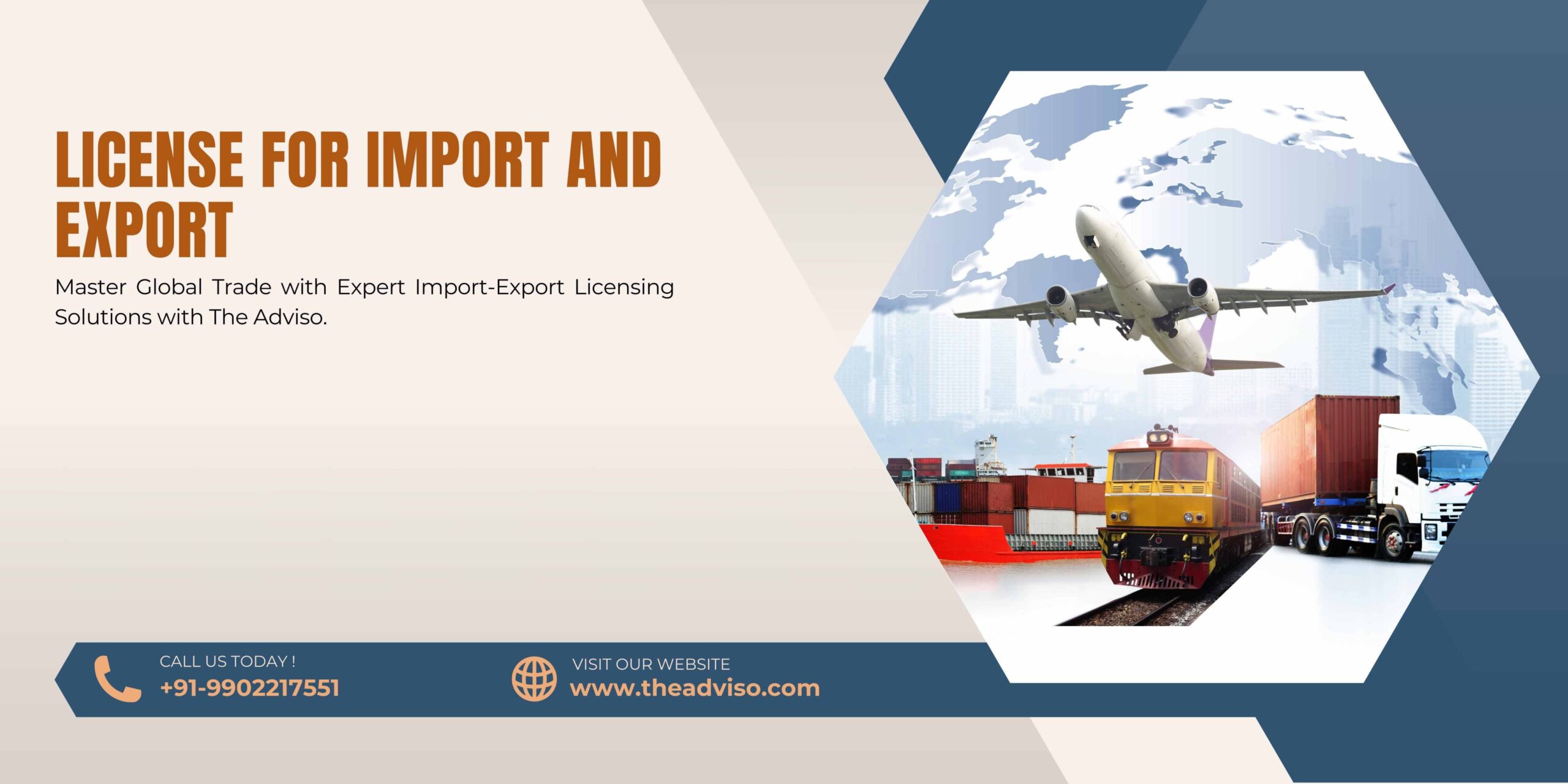License for Import and Export
Most product-based businesses interact with overseas buyers in the potential international markets to amplify their presence. Today, undergoing cross-border trade is not that difficult but it attracts certain legalities, one of which is securing a license for import and export i.e. Import Export Code (IEC). Let’s learn about this license and its legal implications in detail.
Understanding IEC: A Mandatory License for import and export
Granted by the Directorate General of Foreign Trade, IEC is a mandatory legal permit to undertake international trade from India no matter the business type or income threshold. IEC boasts a 10-digit unique code assigned to the eligible applicant after application inspection. IEC also opens doors to various government schemes and initiatives, dedicated to boosting EXIM businesses.
Although the IEC legitimizes the shipment of most products, some products falling under the hazardous category require special permits from concerned authorities. For example, if you are importing tire waste, you must secure a permit from the pollution board.
What exactly is the purpose of IEC?
Apart from legalizing EXIM businesses, this license for import and export helps with various affairs such as
- Clearing customs legalities
- Undergoing inspection at ports
- Catering international markets.
- Securing payment from buyers
Who does not require the Import Export Code?
Albeit IEC spans almost all EXIM entities, the following fall outside its ambit. These include:
- Traders with GST registration. The PAN of the traders shall be treated as a new IEC code.
- Individuals importing goods for personal use
- Government authorities
- Ministries
- Notified Charitable institutions
Securing IEC online: How to secure this license for import and export?
Follow the below-given steps to secure the license for import and export i.e. IEC:
- Navigate the official portal of the DGFT.
- On the homepage, head to the service tab and explore it.
- Click the drop-down list and opt for ‘IEC Profile Management’.
- A new window shall prompt on your screen. Explore the option viz. ‘Apply for IEC’.
- Explore the option namely “Register”. Provide details as mentioned and tap on the Sent OTP tab.
- Wait till you get the OTP on your contact details. Copy-paste the OTP onto the portal and finally hit the Register button.
- The portal will share the login credentials on your registered email. Get the access to the same and use them to log into the portal.
- Post successful login, you will be redirected to the home page wherein you need to click the option viz. Apply for IEC’ followed by the ‘Start Fresh Application’ button.
- Provide the required details in the form including applicant type, bank information, etc.
- Once done, use DSC to make the payment and submit the form.
- After payment, download the receipt boasting the application number.
Note: You will receive the certificate in your email provided the inspection process goes well.
Documents concerning License for Import and Export i.e IEC
The following documents are required to apply for the license for Import and Export i.e. IEC:
- Proof of address for the business premises, such as a sale deed, lease deed, rent agreement, or utility bills (electricity bill, telephone bill, or mobile bill).
- Proof of establishment, incorporation, or registration for the partnership, society, proprietorship firm, company, or HUF, etc.
- A copy of the PAN Card belonging to the individual, firm, or company.
- A copy of the voter ID, Aadhaar card, or passport of the proprietor.
- Canceled cheque copies of current bank accounts for the individual, company, or firm.
- A self-addressed envelope for the delivery of the IEC certificate via registered post
How to take a hard copy of the license for import and export i.e. IEC?
Use the given steps to take the print of the IEC registration:
- Go to the DGFT official portal.
- Explore the Services tab located in the menu section.
- Click on the drop-down list, and explore the option viz. ‘IEC Profile Management’
- Wait till the new window prompts on your screen.
- Tap on the option called ‘Print IEC’
- Go through the details and click on the ‘Print IEC’ button.
Underlining IEC Benefits for Importers and Exporters
- IEC has global recognition and ensures seamless movement of consignment worldwide with zero hassle.
- IEC comes with a plethora of benefits and schemes that fuel growth and safeguard entities. These include duty drawback schemes, credit guarantee schemes, payment protection schemes, etc.
- IEC safeguards exporters’ interest against payment default, ensuring level field play and reinforcing transparency.
- IEC expedites the inspection process at ports and customs, ensuring hassle-free and timely movement of consignments.
Notable Pointers concerning Import Export Code
- IEC updation is mandatory every year as it helps authorities track changes you have made management or business-wise, if any. Not doing so can lead to the IEC cancellation.
- The applicant can revive the canceled IEC after updating provided they stay compliant with the Foreign Trade Policy.
- The applicant does not necessarily require DSC to apply for IEC as Aadhaar authentication is sufficient nowadays.
- IEC does not permit the hassle-free movement of prohibited products. It is just a founding document that legalizes the import-export business.
- To import or export prohibited or notified products, you need a special permit from the concerned authorities. Please refer to the Foreign Trade Policy for more information.
- Every exportable or importable product is assigned an HSN code (Harmonized System of Nomenclature). It is basically a good classification system that helps identify commodities in the EXIM regime.
Conclusion
IEC is not just a license for import and export, it is a comprehensive legal document that comes with various benefits and schemes, helping EXIM businesses to grow and scale. It is easy to secure and adheres to minimal legalities, ensuring peace of mind for license holders.
Read Our Article: Registration For MSMEs




